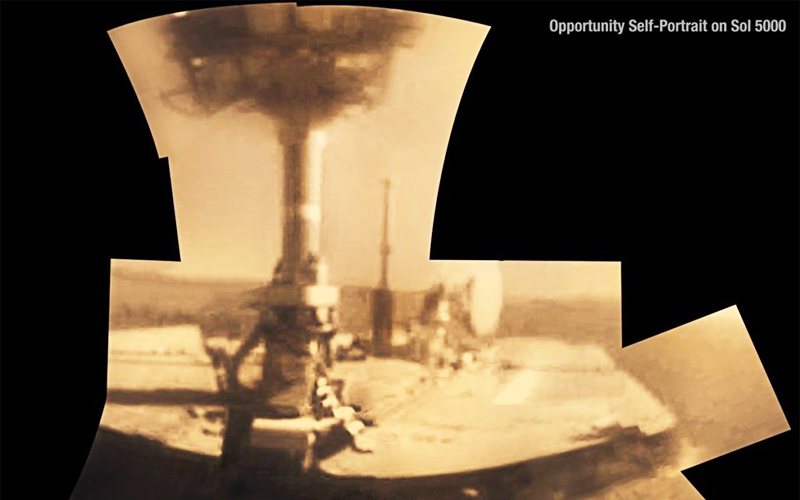Opportunity battens down the hatches to try and weather a super storm
NASA is keeping a vigil over its Opportunity rover as the tenacious robot has been forced to shut down its systems and enter sleep mode as a massive storm has encompassed her; the storm even bigger than the ones expected to decommission the rover over 14 years ago.
On June 12th the Opportunity had to enter hibernation as a huge dust storm is currently sweeping across Mars and directly over the rover. The storm is stretching an unprecedented 15.8 million square miles across Mars, with winds reaching up to 70mph and Opportunity trapped inside it. The main problem for the robust robot in these storms is not being overturned or becoming stuck in the dust, but that the dust completely blankets the atmosphere and blots out the sun, which Opportunity, a solar powered machine, needs to survive.
It has been assumed by NASA that the Opportunity going dark marked the robot entering a low power mode as its energy reserve dipped critically low. The rover will remain in hibernation until the storm passes, after which it will hopefully be able to power itself up again when the sun is visible. The rover has been lucky in the past, with winds blowing enough dust from its panels to be able to recharge again before losing all power reserves.
John Callas, the Opportunity project manager at NASA's Jet Propulsion Laboratory, in Pasadena, California, used an analogy to explain how they felt waiting for their Rover to wake up: “It’s like you have a loved one in a coma in the hospital. The doctors are telling you that you’ve just got to give it time and she’ll wake up, all the vital signs are good, so it’s just waiting it out — but you know, if it’s your 97-year-old grandmother you’re going to be very concerned. And we are. By no means are we out of the woods here.”
Bill Nelson, Chief of the Opportunity Mission’s Engineering Team at NASA’s Jet Propulsion Laboratory stayed more positive and noted: “I’m fairly optimistic at this point. I’m hopeful that we may be able to recover.” Surviving over fourteen years past its life expectancy, it seems like if any rover could weather this storm and keep on roving, it would be Opportunity.
NASA’s Opportunity rover left Earth for her mission to Mars fifteen years ago on 7th July 2003 and landed on the red planet on 25th January 2004, embarking on her mission to collect information and send back scientific observations to Earth. The original expected mission duration for Opportunity was only 90 days, but the plucky robot has bucked all expectations and is still moving and reporting back to Earth fifteen years after her launch, having marked her 5,000th Martian days with a selfie back in February 2018.

The director of NASA’s Mars Exploration Program, Jim Watzin has expressed that NASA is hoping the spirited robot will find a way to survive, like it has so many times before: “We’re all pulling for Opportunity. As you know, it’s been a remarkably resilient rover, lasting 15 years — well beyond its original design life of just 90 days. Its longevity has taught us much about operating on the surface of Mars. But regardless of how this turns out, this little rover has proven to be an invaluable investment that has greatly increased our ability to explore the Red Planet.”
All that is left for NASA to do for Opportunity is to cross their fingers alongside and hope that the tried and true rover manages to weather this latest storm.
Meanwhile on the other side of Mars, Opportunity’s much younger and nuclear powered sister, Curiosity (landed 6th August 2012), has been taking selfies in the dust.
Image sourced from https://www.jpl.nasa.gov/spaceimages/details.php?id=PIA22222





